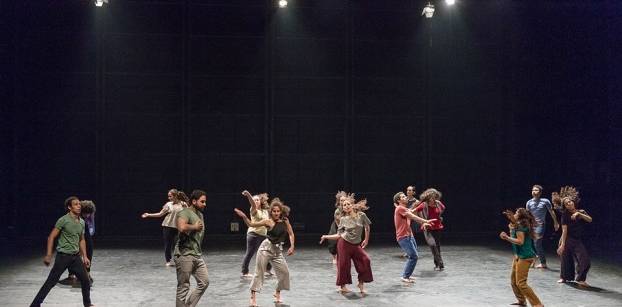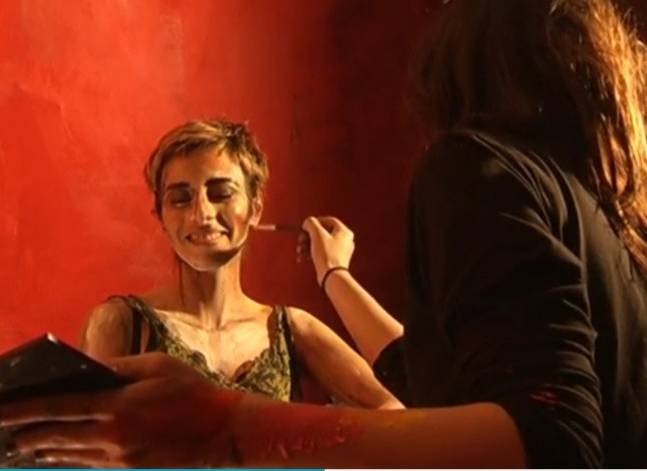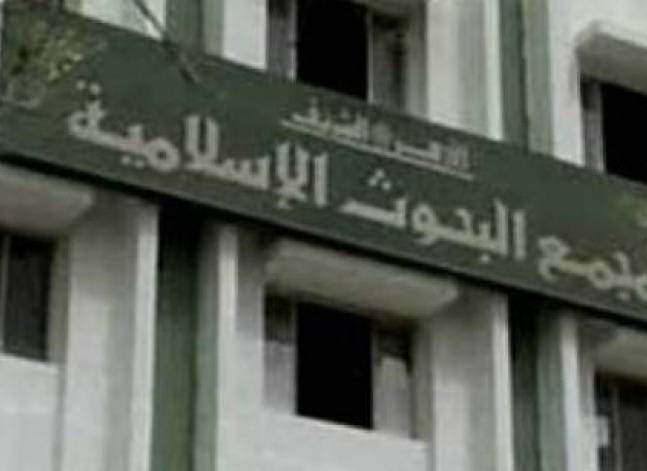Shall You Dance?

Opening Ceremony of 5Ra2s Festival on Monday Feb 13, 2017. Photo by: Bassam al-Zoghby of the Cairo Contemporary Dance Center
CAIRO, Feb 18 (Aswat Masriya) - On the outside, it would seem like a normal apartment in the Cairo suburb of Mohandseen, but as the door opens you cannot help but stand still and watch the beehive of activity in there, with a dozen young people moving every muscle in their busy bodies on the energetic melodies. They did not even notice my presence.
Those are the new students of the Cairo Contemporary Dance Center (CCDC), who are expecting to be the second batch of graduates from a three-year professional training course on contemporary dance in 2019.
The center was founded five years ago by Karima Mansour, a professional dancer who developed a passion for dance before she could even spell letters of her name. Being the daughter of a father working in the economics and development sector, she spent her childhood roaming the world, and in every country, dance classes were part of her everyday life.
In the room where we met, she was looking at the scene behind the glass wall which separates us from the busy dance studio, and she was more than proud of the achievements.
"On the occasion of the CCDC’s 5th anniversary, we are celebrating its first graduates. It is our way to emphasize the importance of dance education," Mansour said.
With a full week of activities starting from February 12 to 19, CCDC is approaching the public with "5 Ra2s" (5 of Dance) festival. Structured improvisations, film screenings, and free open days of workshops and classes for the public are on the festival’s agenda to send a message that "dance is for everyone".
The story behind the school reflects the journey of Mansour as a young lover of dancing and later on as a professional contemporary dance choreographer, dancer, and trainer.
"When my family finally came back to settle in Egypt in the early eighties, I knew that dance is all that I want to do,” she said. "But there was not a single place in Egypt where you can practice dance except the open classes of the Higher Institute of Ballet which were not enough for someone who’s been dancing for years," she added.
The only way to improve her skills was to follow the visiting foreign dance companies which were performing at the Cairo Opera House. "I was asking them to let me join their rehearsals no matter what the dance style is,” she said. Having completed her secondary education, Mansour was enrolled in the High Cinema Institute after which she headed to Rome for a two-year professional formation dance course, and then to the London Contemporary Dance School for five years for a BA and a Masters in contemporary dance.
Upon her return to Egypt in 1998, Karima rejoined the High institute of Ballet but this time as an assistant professor before she decides to explore her chances outside the governmental institute. She established MAAT for Contemporary Dance, the first independent dance company in Egypt at the time.However, the new step came with its new tough challenges. “There were no available spaces for rehearsals or well-trained dancers in contemporary dance, and above all, it was not familiar for the few governmental theaters to accept independent performers on their
“There were no available spaces for rehearsals or well-trained dancers in contemporary dance, and above all, it was not familiar for the few governmental theaters to accept independent performers on their stage,” she said. ‘Taming’ was the first production for Karima’s newly established company and also the first independent artwork to be performed on the stage of El Gomhoureya Theater of the Cairo Opera House in 2000.
Since then, Mansour has created more than 20 full choreographic works that continued to be performed in various International festivals as well as more than 20 various collaborations in Theatre and cinema. "What MAAT did was the seeds for what later became the independent dance scene,” she explained.
“One of MAAT's activities was to organize workshops for dance lovers. Some of them became later the students of CCDC, or members of its training team,” she added.
The bigger step came a few years later. Following the 2011 Uprising, the state ’s cultural entities, according to Mansour, became open to new ideas. She introduced her project to Dr. Emad Abu Ghazi who was the Minister of Culture at the time. The proposal was to establish a school that specializes in contemporary dance where the students spend full three years of training that enables them to study and dance. The school offered Hip Hop, Ballet, Modern Jazz, Martial Arts, Bio Mechanics, Anatomy, and dance history courses. The school graduates obtain accredited certificates from the UNESCO International Dance Council which enables them to have their Masters from international academic institutes. "There was a need to a fresh space for dance teaching, practicing, and experimenting,” she added.
Contemporary Dance Development Centre was established in December 2011 under Creativity Centre of the Egyptian Ministry of Culture and the direction of Mansour. In June 2013, the project had to give up the patronage of the Ministry of Culture because of what Mansour considered as “vague administrative policies of the ministry”. The school resumed its activities as Cairo Contemporary Dance Centre (CCDC) in 2014 as the first independent contemporary dance school in Egypt, under the umbrella of MAAT. The first batch of the school students joined it in January 2012 and had graduated in June 2015 after 3 full years of study.
According to Mansour, what is special about contemporary dance is that it can reflect the culture and reality of every society. Though, in the currently developing scene of the independent contemporary dance in Egypt, she notices that many of the practitioners start their career as contemporary dance choreographers or trainers after few short courses, and this negatively affects the quality of their production. She believes that copying western ideas and methods alienates the audience and does not serve the concept of the dance style as an artistic means of expression. The same happens when artists copy their folklore "artists should spend enough time studying the vocabularies of contemporary dance in order to produce original artworks that reflect our culture. Education is the backbone of this continuous process," she explains.
The same happens when artists copy their folklore "artists should spend enough time studying the vocabularies of contemporary dance in order to produce original artworks that reflect our culture. Education is the backbone of this continuous process " she explains.
CCDC graduates are strongly tied to their school. While some are set to start choreographic work, others are improving their skills to become trainers or considering opportunities abroad.
Samar Ezzat, who joined CCDC as a junior trainer, is now a CCDC graduate.
"Practicing 5 hours a day on daily basis makes a very big difference”, she said. “I have never imagined that I could do such tough moves when I am 29 years old”.
She believes that it is important to spread the culture of dance education in Egypt rather than traveling abroad. "We started this here and we have to continue. We need to convince all those who are passionate about dance that they can have the proper education in their country,” she added.
Ibrahim Abdu, another CCDC graduate, is starting his choreographic work, supported by CCDC. He believes that contemporary dance is an attractive language that should be adopted in the theater. Since his graduation, Ibrahim has become involved in the everyday activities of CCDC, and at the same time, he is working on his own choreographic project "more people are showing an increasing interest in dance. This makes me feel more responsible because we are not in a closed shell anymore. We should take it very seriously,” he added.
Another CCDC graduate is Amani Atef who believes that her study of contemporary dance changed her from top to bottom. “I always had a communication and trust issues. Practicing contemporary dance made me more open to the others,” she said. “You have to trust your partner when he carries you on his shoulders so you may fall at any moment, and you have also to trust yourself because if you fell down you should know how to protect yourself.” She explains,“dance teaches you how to let your inner energy come out of your body even without a move,” she added. Amani who had trouble convincing her family of her choice is currently looking forward to traveling abroad for further studies.
Abul Rahim Mohammed, a recent graduate from the faculty of engineering and also from the CCDC, believes that dance is “a science”. To him, dance classes kept him going and motivated to pass his faculty exams.
“You need to know how every part of your body works and where is the center of your body and how to control it. It is a journey to rediscover the value of your body which is not less than your mind as we think,” he added.
Part of Mansour’s challenge is to spread the school’s fundamental concept that dance education is essential for everyone.
"Dance is a way to create a healthy atmosphere for all of us. It teaches people to think creatively, to transfer their energy into positive creations, to respect their own bodies and space and those of the others. What else do we need for ourselves and for our society?" she concluded.









facebook comments